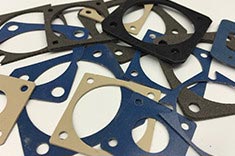EMI Shielding Products
- Custom Gasket Fabrication
- Connector Gaskets
- Bonded O Ring
- Custom Gaskets
- Conduct-O-Knit Knitted Wire Mesh
- Conduct-O-Seal Combo Gasket
- Conduct-O-Elastomer
- Conduct-O-Seal Oriented Wire in Silicone Gasket Material
- Conduct-O-Mesh Tape
- Conduct-O-Foam
- Conduct-O-Bond
- Optical Filters For Electronic Displays
- Shielded Vent Panels
- ESC Board Level Shielding
- 300 Series
Basic Facts of RF Shield and Design

Knowing about RF shielding effectiveness requirements for specific applications and environments is essential. RF shields are systems that are composed of several interacting components. When designed and installed properly, the shields create reliable and functional barriers that significantly reduce RF noise to manageable (acceptable) levels. These shields are key components for optimal shielded systems. One of the key factors in optimizing performance is choosing a proper conductive material that can be bonded. With that in mind, an RF shield is only as strong and dependable as its weakest component.
Material choice is not the only factor to consider when designing RF shielding. Many standards and specifications must be carefully considered to achieve the best possible design outcomes. Of all the factors to consider, frequencies of interest could be the most important. These include:
- Plane wave
- Microwave
- Electric
- RF fields
The test methodology used by SEdB is used to verify needed frequencies, and the IEEE-299 and MIL-STD-285 are the two most commonly used standards. Basing RF design on exact needs is a design requirement that speeds up production and reduces production costs.
When you contact our team, we will work one-on-one to create the best shielding. We will review a detailed requirements assessment to ensure all needs are understood and problems solved before production.
Electronic devices are prone to failure and permanent damage without adequate RF protection, which is why it is important that you and your team spend the time and energy coming up with the best possible solutions.



